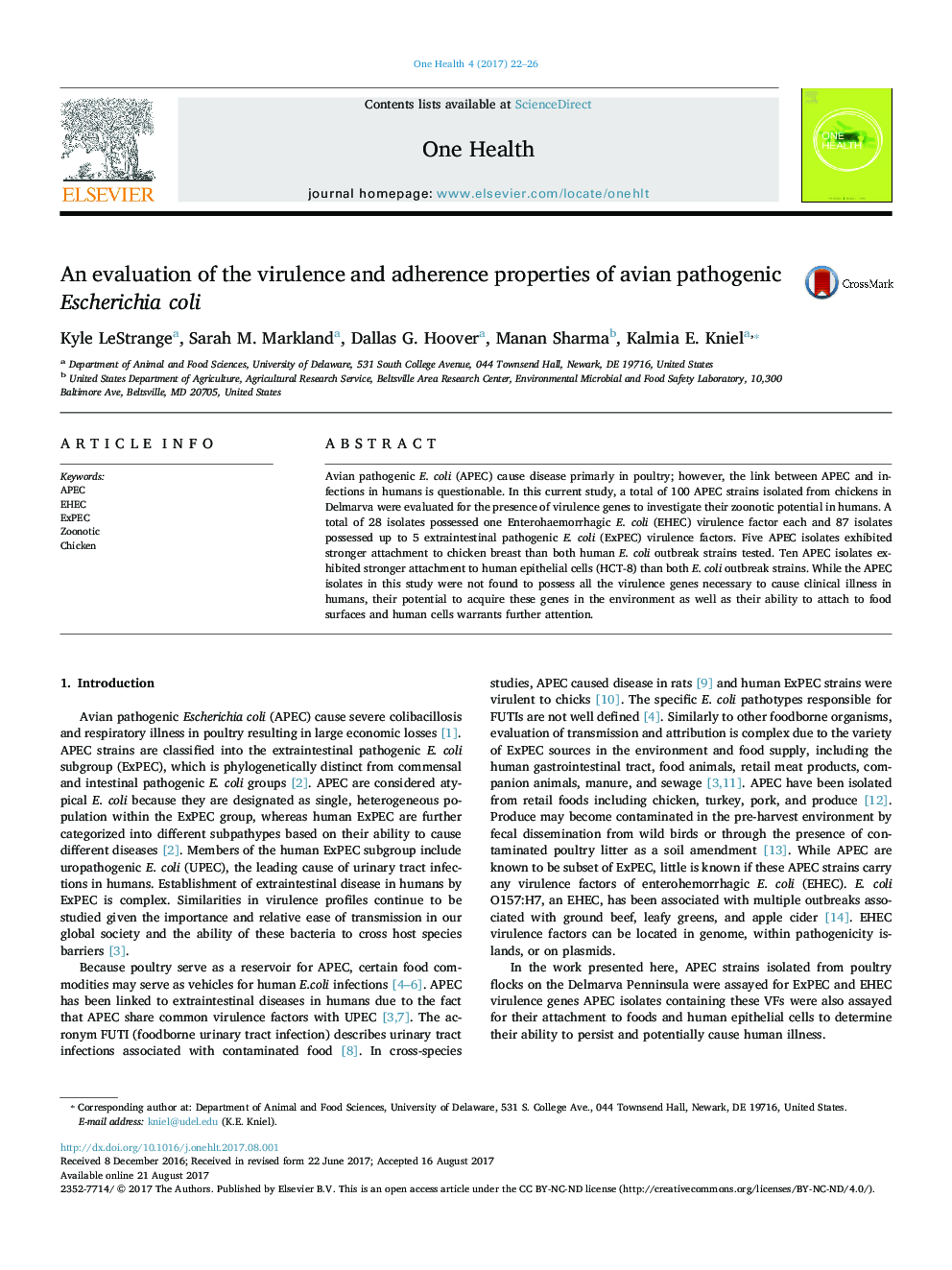| Article ID | Journal | Published Year | Pages | File Type |
|---|---|---|---|---|
| 5739977 | One Health | 2017 | 5 Pages |
â¢28% of the APEC possessed genes associated with human disease-causing E.coli.â¢Some APEC attached more strongly to chicken breast and human cells compared to outbreak strains of E. coli.â¢The presence of enterohemorrhagic E. coli (EHEC) genes in APEC may indicate an urecognized reservoir of virulence genes in APEC.
Avian pathogenic E. coli (APEC) cause disease primarly in poultry; however, the link between APEC and infections in humans is questionable. In this current study, a total of 100 APEC strains isolated from chickens in Delmarva were evaluated for the presence of virulence genes to investigate their zoonotic potential in humans. A total of 28 isolates possessed one Enterohaemorrhagic E. coli (EHEC) virulence factor each and 87 isolates possessed up to 5 extraintestinal pathogenic E. coli (ExPEC) virulence factors. Five APEC isolates exhibited stronger attachment to chicken breast than both human E. coli outbreak strains tested. Ten APEC isolates exhibited stronger attachment to human epithelial cells (HCT-8) than both E. coli outbreak strains. While the APEC isolates in this study were not found to possess all the virulence genes necessary to cause clinical illness in humans, their potential to acquire these genes in the environment as well as their ability to attach to food surfaces and human cells warrants further attention.
